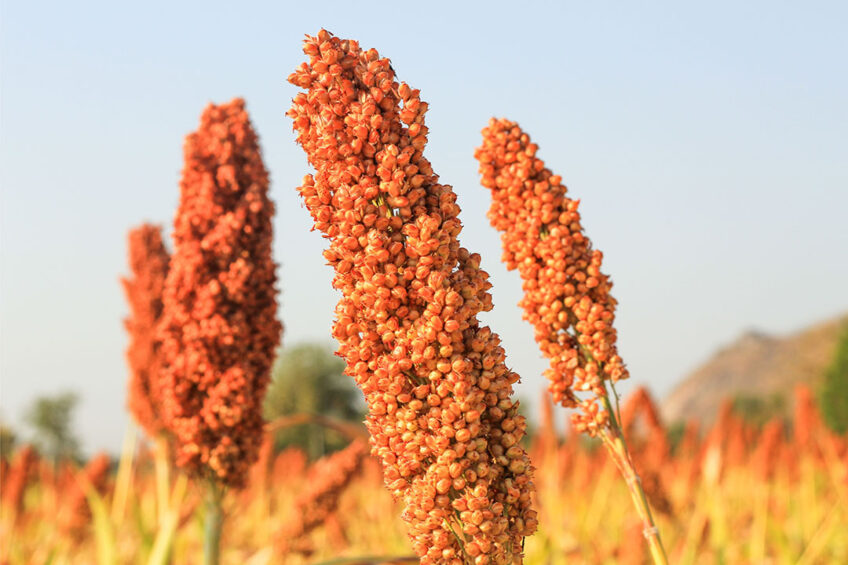Sustainable, climate-resilient feed for livestock

As the world faces the escalating challenges of climate change, the agricultural sector, particularly animal husbandry, is under increasing pressure to adapt. The need for animal feed that can withstand changing weather patterns, rising temperatures, and water scarcity is more pressing than ever.
In this context, sorghum and millet stand out for their resilience and adaptability. Known for their robust nature and ability to thrive in diverse climates, sorghum and millet are emerging as versatile and sustainable feed options that could shape the future of livestock farming. Here I delves into the potential of sorghum and millet as animal feed, exploring their unique characteristics, economic benefits, and the recent advancements in their cultivation practices that contribute to sustainable agriculture and climate resilience.
Natural solution to mitigate climate change
Sorghum and millet, cereal grains native to Africa, have long been celebrated for their remarkable adaptability. Unlike many other crops, sorghum and millet have a natural resistance to drought and heat, making them ideal feed options in the face of the increasing temperatures and water scarcity associated with climate change. A study published in the scientific journal Nature in 2020 shed light on the unique adaptive capabilities of sorghum. The researchers found that sorghum’s deep root system and efficient water use allow it to survive and even thrive in a variety of environmental conditions. This adaptability is particularly beneficial in regions prone to climate extremes, where traditional feed crops often fail. By providing a reliable harvest even in challenging conditions, sorghum and millet play a crucial role in ensuring global livestock feed security in the face of climate change.
Stimulating economies in arid regions
In addition to their environmental benefits, sorghum and millet also have significant economic potential. In arid and semi-arid regions, where traditional feed crops struggle to survive, sorghum and millet can flourish, providing a valuable source of income for farmers. This is particularly important in these regions, where agriculture often forms the backbone of the local economy.
The economic potential of sorghum and millet is further amplified by their versatility. They can be used as feed for livestock, an important consideration in regions where pasture may be scarce. This versatility opens up multiple markets for sorghum and millet, stimulating local economies and providing a sustainable livelihood for farmers.
Enhancing sustainability
The potential of sorghum and millet as sustainable feed crops is further enhanced by recent advancements in cultivation practices. Researchers across the globe have been exploring the genetic diversity of these grains to breed varieties with improved traits. These traits include increased yield, improved nutritional content for animals, and enhanced resistance to pests and diseases.
Increased yield means that farmers can produce more feed from the same amount of land, a crucial factor in feeding the world’s growing livestock population. Improved nutritional content makes sorghum and millet a more valuable feed source, contributing to livestock health and productivity. Enhanced resistance to pests and diseases reduces the need for chemical pesticides, contributing to the sustainability of their cultivation. These advances thus not only increase the productivity of sorghum and millet crops but also contribute to their sustainability. By reducing the need for chemical inputs, these advances help to protect the environment and promote biodiversity. Furthermore, by developing varieties that are more resistant to pests and diseases, researchers are helping to ensure that sorghum and millet can continue to provide a reliable source of feed and income in the face of future challenges.
Robust option for the future
Sorghum and millet represent a promising solution to the challenges of climate change and sustainability in livestock farming. Their natural adaptability, economic potential, and the ongoing advances in their cultivation practices make them robust feed options for the future. As we continue to navigate the uncertainties of climate change, feed crops such as sorghum and millet will be crucial in ensuring livestock feed security and sustainable agricultural practices but also contribute to broader efforts to combat climate change and promote sustainability.











